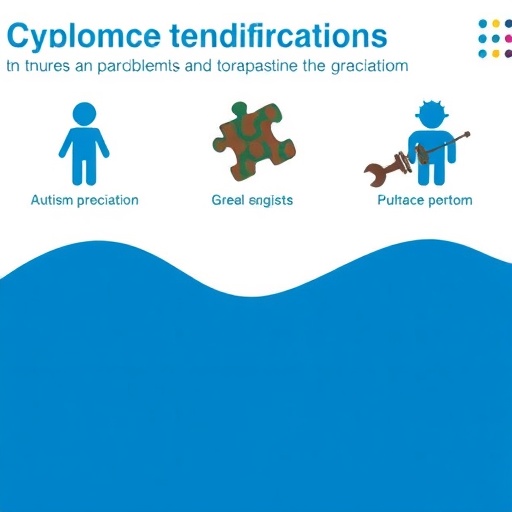Rivers serve as the lifeblood of terrestrial ecosystems, intricately balancing environmental processes and sustaining biodiversity. Their health is not solely determined by water purity but intricately linked to the biological communities they harbor and the ecological functions they perform, such as plant respiration, organic matter breakdown, and nutrient cycling. These processes collectively maintain the equilibrium of aquatic environments, which, if disrupted by anthropogenic influences, pose threats not only to ecosystem integrity but also to human well-being.
Recognizing the multifaceted nature of river health assessment, researchers at the University of the Basque Country, led by Ikerbasque Research Professor Luz Boyero, have embarked on an innovative study to standardize methodologies capable of gauging river ecosystem conditions. This approach emphasizes an integrative evaluation of biological communities alongside ecosystem functions, seeking to develop tools that are both scientifically robust and pragmatically accessible for environmental managers tasked with safeguarding aquatic habitats.
Central to this study is the exploration of diverse organic and inorganic substrates as proxies for monitoring the decomposition processes and primary production within streams. Diana Rojo, a researcher in the Stream Ecology group at EHU, spearheaded the experimental deployment of substrates in agricultural streams situated within the Green Belt zone of Vitoria-Gasteiz. The experimental design involved contrasting sites with pristine conditions against those subject to agrarian pressures, allowing for a nuanced understanding of how human activities manifest in ecological alterations.
The substrates selected were deliberately varied to encompass a broad spectrum of organic matter and materials known to interact differently with stream biota and microbial communities. Among these, natural leaves from alder, oak, and banana plants were chosen due to their varying chemical compositions and decomposition rates. Additionally, non-traditional substrates such as marble tiles, medicinal tongue depressors, cotton strips, and commercially available green and red tea bags were utilized, providing a comparative framework to discern their efficacy as ecological indicators.
Incubating these materials within the stream environments for four weeks enabled the colonization and interaction of microbial communities, invertebrates, and algae. The subsequent retrieval and analysis focused on assessing community composition, biomass accumulation, and decomposition rates, thus elucidating the substrates’ capacity to reflect ecosystem health and disturbance levels accurately. This experimental protocol not only measured biotic responses but also provided early warning signals of anthropogenic impacts that might otherwise go undetected using conventional water chemistry analyses alone.
Results demonstrated adenine substrates such as alder leaves excelled in reflecting total organic matter decomposition and supporting diverse macroinvertebrate assemblages, making them invaluable for holistic ecosystem assessments. Banana leaves and cotton strips were particularly sensitive to microbial decomposition, highlighting subtle shifts in microbial activity that signal ecological degradation. Marble tiles proved effective in quantifying algal biomass accrual, thereby serving as proxies for primary productivity and nutrient enrichment levels within aquatic systems.
The practical implications of these findings are profound. By leveraging a triad of substrates—alder leaves, banana leaves or cotton strips, and marble tiles—researchers and environmental managers can obtain timely, cost-effective, and integrative insights into river ecosystem health. This multifaceted approach surpasses the limitations of relying on singular assessment techniques, offering a replicable framework adaptable to diverse geographic and climatic contexts worldwide.
Equipped with these novel bioindicators, environmental agencies can enhance monitoring programs to detect early ecological perturbations, prioritize mitigation efforts, and ultimately preserve the functional integrity of vital freshwater resources. This is particularly critical given that river ecosystems play a fundamental role in global carbon and nutrient cycles, acting as conduits and transformers within the broader biosphere.
Moreover, the universality of the proposed substrates aligns well with global scientific collaboration goals, facilitating cross-regional comparisons and contributing to a unified understanding of how human activities influence stream ecosystems on a planetary scale. This harmonization of methods holds promise for advancing ecological research and informing policy frameworks that address freshwater conservation in an era of escalating environmental change.
This research, part of Diana Rojo’s doctoral dissertation under the mentorship of Professor Boyero, is embedded within the larger scope of the GLoBE (Global Patterns of River Ecosystem Functioning) network. GLoBE aims to unravel the complex interactions and drivers behind river ecosystem processes globally, thus situating this study within an ambitious effort to delineate natural and anthropogenic influences on freshwater biodiversity and function.
The collaboration with technical staff from the Green Belt area of Vitoria-Gasteiz City Council underscores the importance of integrating scientific inquiry with local environmental management. Such partnerships ensure that research outcomes translate effectively into practical applications, bridging the gap between theory and action.
As freshwater ecosystems face unprecedented pressures from agriculture, urbanization, and climate change, innovative and reliable indicators become indispensable. This study provides a compelling blueprint for ecological monitoring that balances technical sophistication with feasibility, bolstering efforts to maintain the vitality of riverine habitats upon which countless species, including humans, depend.
In sum, rivers are more than mere watercourses—they are dynamic ecological arenas where life thrives and processes converge. Safeguarding their condition necessitates comprehensive approaches that encompass both biotic communities and underlying functional processes, with the research presented here marking a critical step toward that goal.
Subject of Research: Assessment of river ecosystem health through decomposition rates and algal biomass accrual using various organic and inorganic substrates as bioindicators.
Article Title: Decomposition of different organic matter substrates and algal biomass accrual as early warning indicators of human impacts on stream ecosystems
News Publication Date: August 7, 2025
Web References:
Stream Ecology Group, University of the Basque Country
GLoBE Network
Original Article DOI
References:
Rojo, D., Alonso, A., Pérez, J., Agut, A., Hermosilla, B., Tiegs, S.D., Boyero, L. (2025). Decomposition of different organic matter substrates and algal biomass accrual as early warning indicators of human impacts on stream ecosystems. Ecological Indicators. https://doi.org/10.1016/j.ecolind.2025.113998
Image Credits: Universidad del País Vasco (EHU)
Keywords: Aquatic ecosystems, Ecology, Aquatic ecology, Ecological processes, Ecosystems, Rivers
Tags: anthropogenic impacts on riversassessing ecosystem functions in streamsbiological communities in riversdecomposition processes in river systemsecological monitoring techniquesenvironmental management of aquatic habitatsinnovative methodologies in stream ecologynutrient cycling in aquatic ecosystemsprimary production measurement in streamsriver health assessmentsubstrate-based river monitoringUniversity of the Basque Country research initiatives





